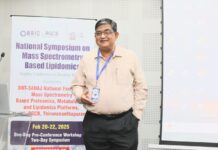Chinese researchers have successfully reversed Type-1 diabetes in a patient using a novel stem cell therapy, marking a significant breakthrough not only in diabetes management but also in the use of stem cells for therapeutic purposes. The study, published highlights the potential of stem cell treatments for chronic diseases.
The treatment involved transplanting insulin-producing cells, derived from the patient’s own chemically induced pluripotent stem cells (CiPSCs), beneath the abdominal wall. One year after the procedure, the patient achieved sustained insulin independence and restored glycemic control.
As reported by hindustantimes, this approach tackles the disease by leveraging the unique capabilities of stem cells, which can transform into any cell type. The research showcased two major advancements: First, the CiPSCs were created from the patient’s regular cells, reprogrammed using chemicals to become insulin-producing cells, avoiding the need to harvest stem cells from embryos or bone marrow, which are more invasive or ethically controversial.
Second, these newly created insulin-producing cells were implanted under the patient’s abdominal skin, demonstrating an innovative delivery method.
James Shapiro, a transplant surgeon from the University of Alberta, Canada, described the results as “stunning,” noting that the patient, who previously required large amounts of insulin, is now diabetes-free. The experiment was part of a phase I clinical trial at an undisclosed medical facility in China.
The 25-year-old woman began showing improvement just 75 days after the transplantation. While the results are promising, the researchers emphasized the need for larger clinical trials to ensure the safety and effectiveness of this treatment.
























